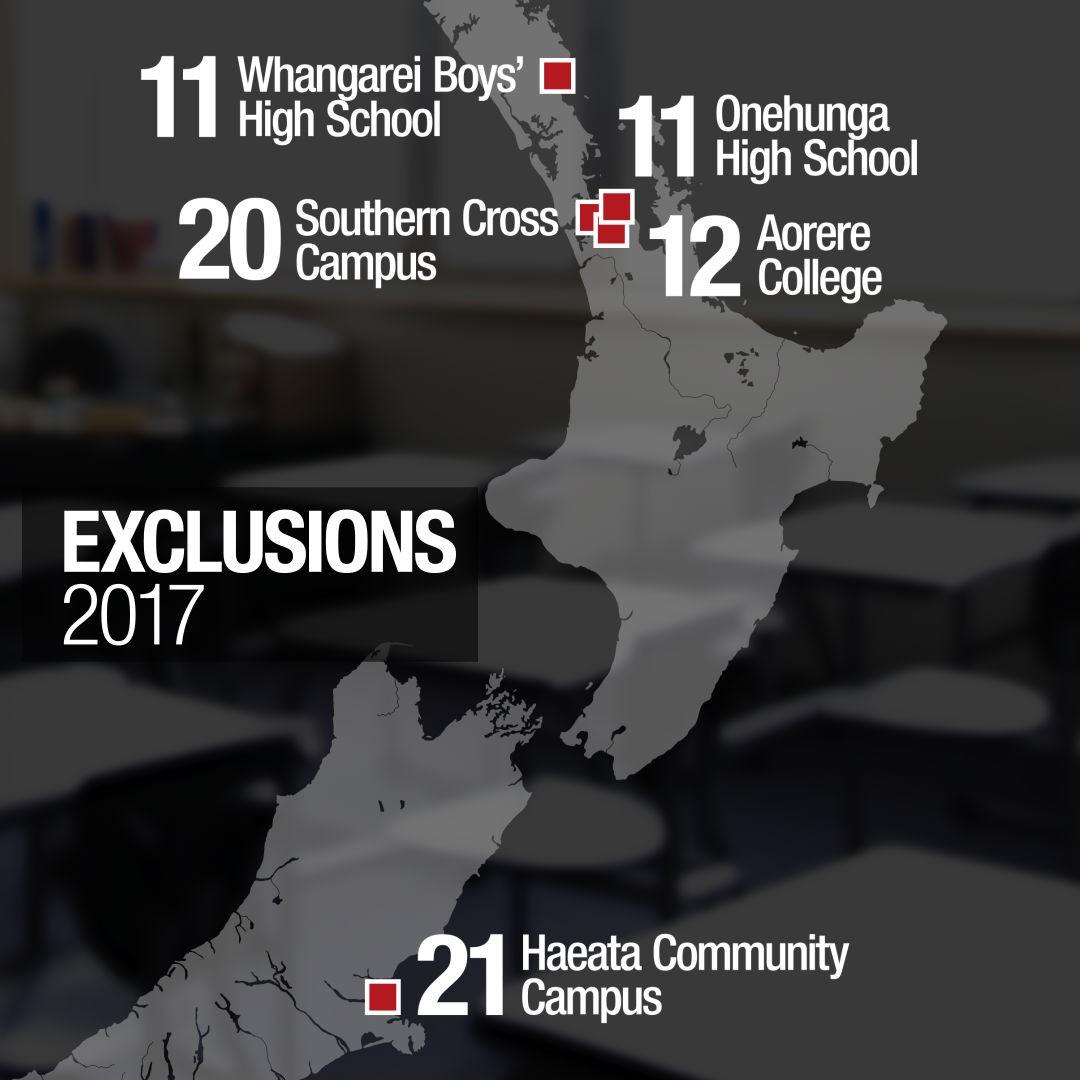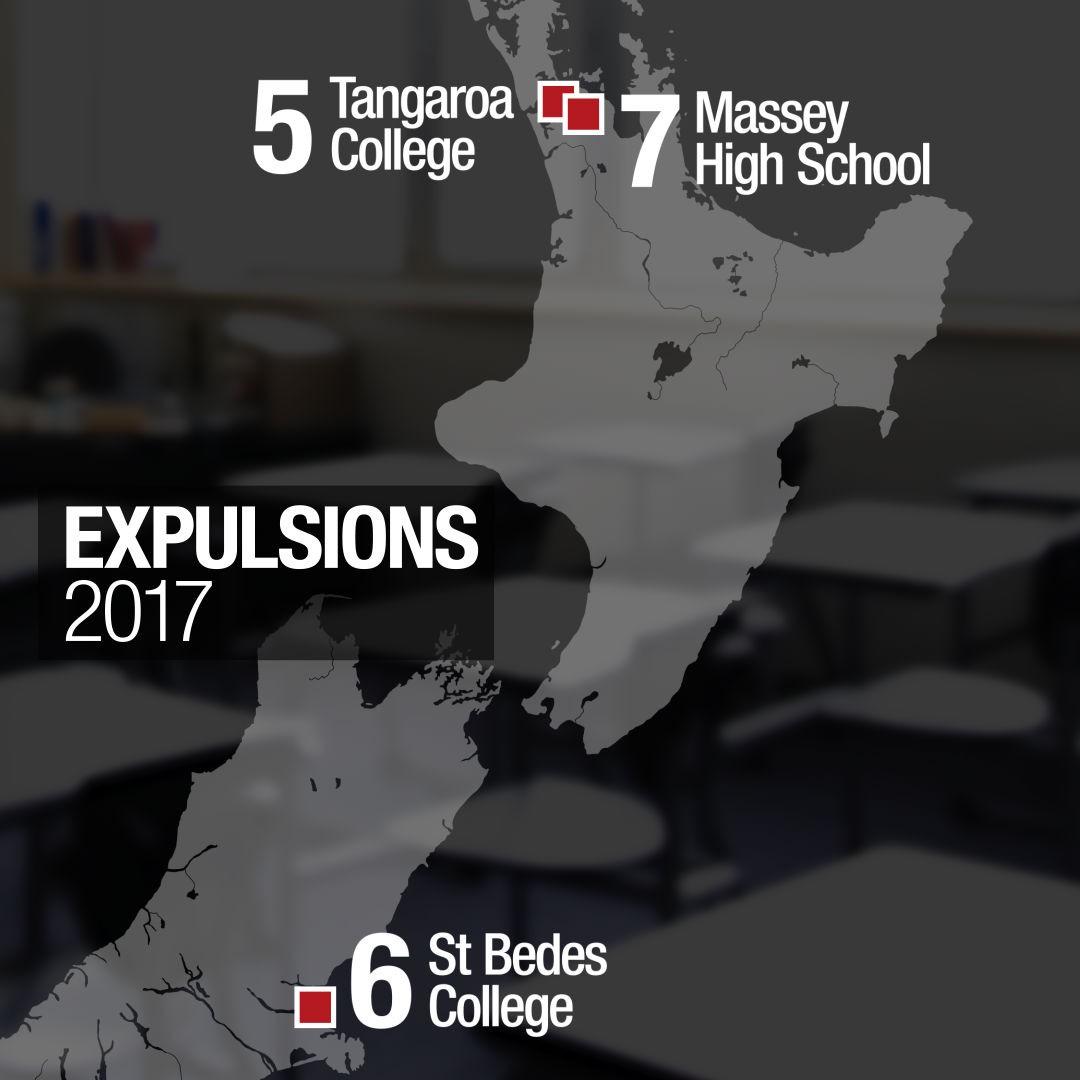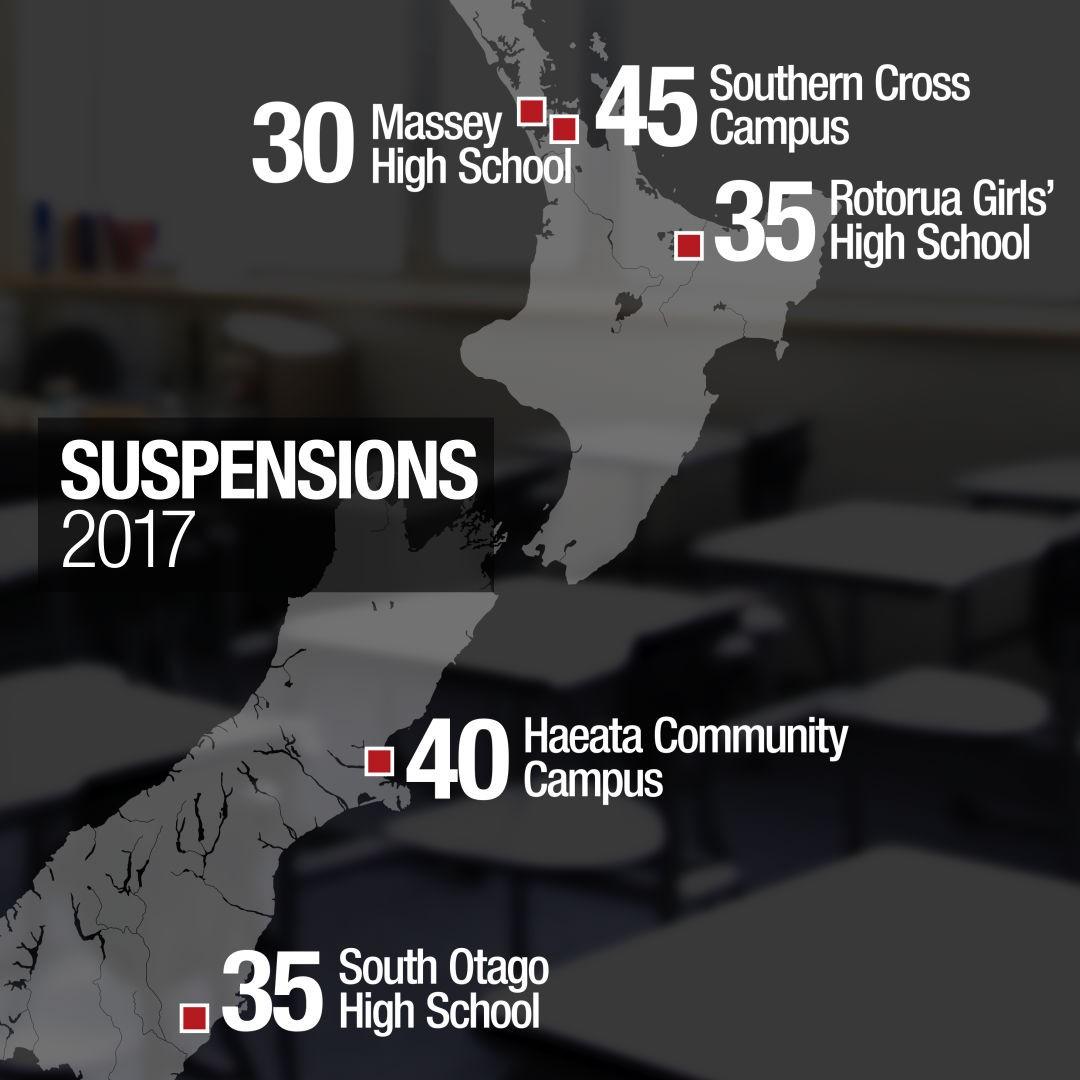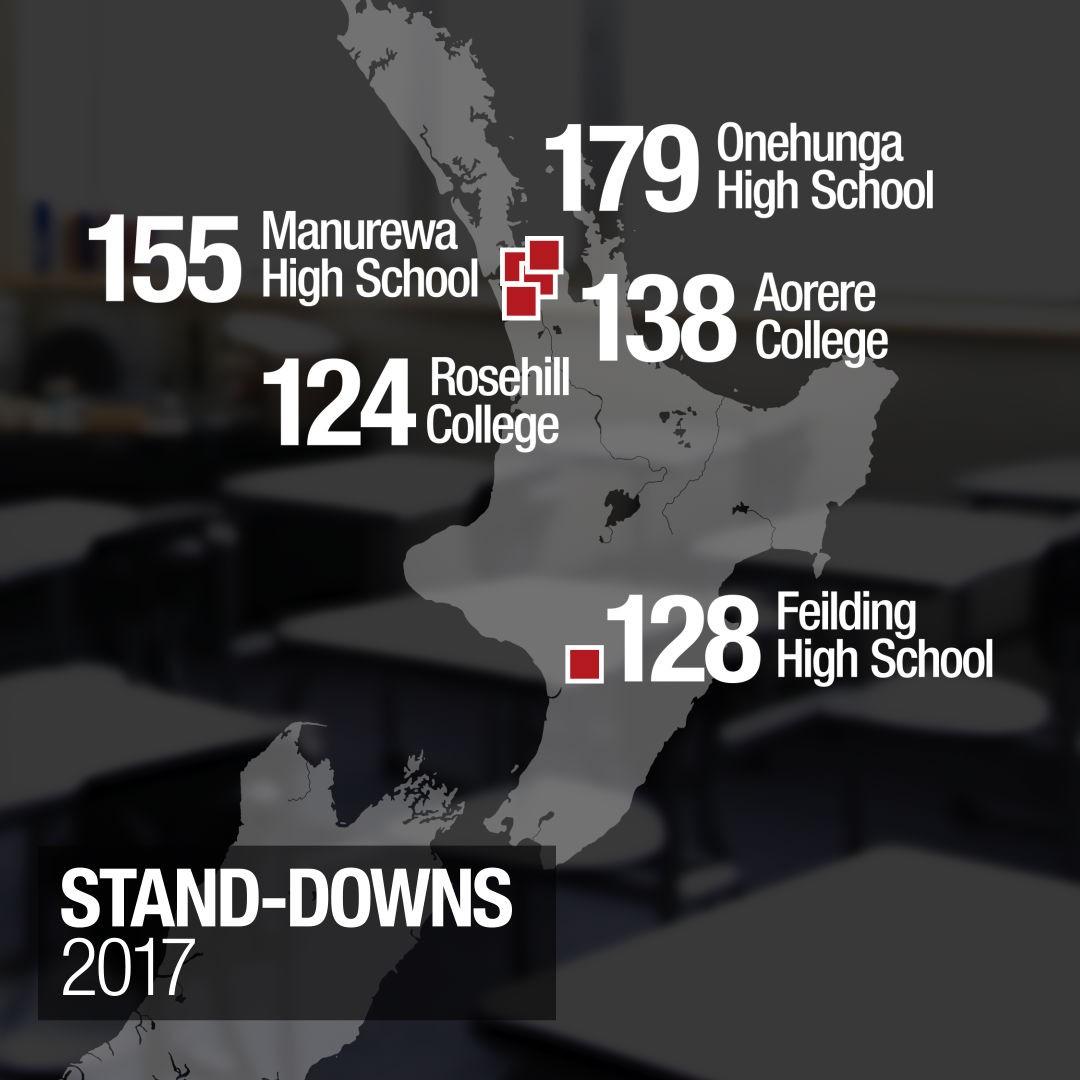New figures reveal the Kiwi schools with the most stand-downs, suspensions, exclusions and expulsions.
The data, released to Newshub under the Official Information Act, reveals schools are dealing with drug, violence and behavioural problems as students act up and lash out.
- School reaches crisis point over lack of funding for high needs students
- Autistic Auckland boy left in the cold after multiple exclusions
Newshub spoke to the principals with the highest disciplinary rates in 2017. They discussed the work they're doing, the challenges their students face - and the lack of support they've received.

Haeata Community Campus only opened a year ago, but led the country last year in exclusions, was second in suspensions and was eighth-equal in stand-downs.
A stand-down is the removal of a student for up to five days. A suspension is the formal removal of a student until the school's Board of Trustees meets to decide the student's future.
Exclusions and expulsions are suspensions where enrolment has been terminated. Exclusions are for students under 16, and expulsions are for students over 16.
Principal Andy Kai Fong says this first year provided "big challenges for Haeata" as the new school attracted an unexpected large number of out-of-zone students, many who had been excluded by their previous school or were no longer in education.
"These numbers reflect the school's utter focus on providing a safe environment for its students and a zero-tolerance to anti-social behaviour," he told Newshub.
"Most importantly, the expelled students are only a small group of Haeata's 'second-chance' students and most of them have successfully re-engaged with their education because of the fresh approach of Haeata."

Aorere College has 1550 students. In 2017, 12 students were excluded and 138 stood-down - a number who were involved in the same "unacceptable incident".
Principal Gregory Pierce says many of its decile two students come from "challenging home environments", facing overcrowding and income issues.
"We draw the line on violence against other students and threatening behaviour to staff, together with drug offences," Mr Pierce says.
"Unfortunately violence and drug offences make up a disproportionate number of our annual stand-downs."

And in 2017, Onehunga High School led the country with 179 stand-downs - averaging nearly a fifth of the school population. Principal Deidre Shea denies her school has a problem, and says most students have "great life outcomes".
"All schools have students who present with challenges," a spokesperson told Newshub.
"Stand downs are an appropriate response for some student behaviours, and always involve meeting with families and working restoratively to address whatever the issues are, for that student, at that time."
The Ministry of Education says the statistics represent the schools' attitudes towards discipline, rather than the number of misbehaving students.
"Stand-downs and suspensions are not measures of student behaviour so much as they are measures of schools' reactions to behaviours," the Ministry told Newshub.
"While on school may opt to suspend a student over a particular incident, another school may not. The number of these incidents should not be used as a proxy measure for total student behaviour."

But several principals say they aren't getting the funding and support they need to help high-needs students with their problems.
"Unfortunately, expulsions of some high needs students are also used as a tool to get them access to much needed inter-agency support and intervention," says Mr Kai Fong.
"It has proven a challenge for Haeata to get inter-agency support to help certain students to return to school safely."
"It is widely recognised that funding for education, health and wellbeing is at a lower level than it should be, across the whole of our country," Ms Shea adds.
However the Ministry says as a result of its initiatives, national rates of suspensions, stand-downs, exclusions and expulsions are at their lowest, having nearly halved since records began in 2000.
Newshub.
